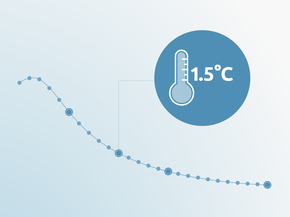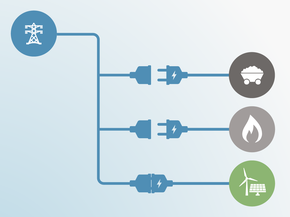Country summary
Overview
On August 16, 2022, President Biden signed into law the Inflation Reduction Act (IRA), the most ambitious and potentially impactful climate policy in US history. It sets the country’s emissions on a trajectory toward meeting its climate commitment to cut greenhouse gases (GHG) emissions in half by 2030, below 2005 levels, but more action is required to get there.
The IRA marks a radical shift in US climate action and, by putting emissions firmly on a downward trajectory, it sends a global signal that the world’s largest historical emitter is now beginning to meets its responsibilities.
The CAT estimates that implementation of IRA will accelerate the decline in US GHG emissions but the US will need to implement additional policies to reach its proposed 50-52% reduction target (including LULUCF). If no further policies are implemented, we project that in 2030, US emissions will decline to 26-42% below 2005 levels (incl. LULUCF), which is still a distance from its 2030 target of 50-52% below 2005 levels. As a consequence, US domestic action is now rated on the border between “Insufficient” and “Almost sufficient”.
Less encouraging, the US Congress approved USD 1bn for international climate finance for 2022, falling far short of President Biden’s pledge to provide USD 11.4bn a year by 2024, announced in September 2021. The low climate finance provision is not enough to make up its fair share contribution and undermines the credibility of stated US intentions to line up as a global leader on climate change.
Taking this into account the Overall CAT rating for all US policies – domestic action, 2030 target and international climate finance is “Insufficient”.
The ambitious bill injects USD 369bn to develop and deploy the clean energy technologies and investments essential to decarbonising the economy in the medium and long term. The IRA is a toned-down version of a more ambitious USD 1.75tn bill (“Build Back Better”), which stalled in the US Senate.
However, while the largest share of the IRA is directed to clean technologies, it also includes several concessions for the fossil fuel industry such as requiring minimum acreages of public lands for drilling leases. These concessions contradict President Biden’s promise on his first day in office to ban new oil and gas drilling on federal lands.
Prior to the IRA, President Biden’s actions to address inflation and other effects of high oil and gas prices in the short term may compromise his long-term climate goals. The US banned imports of Russian oil and gas in response to Russia’s invasion of Ukraine. In order to compensate for the loss of Russian oil supply, President Biden is releasing a million barrels of oil per day from the nation’s strategic reserves for six months, announced plans to hold his first oil and gas leasing since he took office, and is encouraging oil and gas producers to drill and increase production.
Following a steep decrease in emissions in 2020 as a result of the COVID 19 pandemic, emissions bounced back as the US economy recovered in 2021. The CAT estimates that US GHG emissions in 2021 increased by 6% above 2020 levels (excl. LULUCF), returning to pre-pandemic levels. The effects of COVID-19 induced a drop in emissions that helped the US meet its 2020 targets under the Copenhagen Accord.
The Biden administration submitted an updated long-term strategy to the UNFCCC in November 2021, officially committing the US to net zero emissions by 2050 at the latest. The CAT evaluates the net zero target as ‘Average’ given several needs for improvement to enhance the target’s scope, architecture and transparency.
The “Infrastructure Investment and Jobs Act”, signed into law in November 2021 with bipartisan support, aims to spur economic recovery and update the country’s infrastructure while accelerating climate action. The USD 1.2tn act, the largest federal investment into infrastructure projects in more than a decade, comprises investments in a wide range of areas that can indirectly enable the transition to a low-carbon economy, including the development of EV charging infrastructure, upgrading the power grid, and improving energy efficiency and electrification in buildings.
In June 2022, the US Supreme Court ruled to limit the EPA’s ability to regulate carbon emissions from power plants. However, cheaper renewables are decarbonising the US power sector, driving coal out of the electricity market, and the ruling is unlikely to change that. This brings President Biden's 2035 100% emissions free electricity sector target even further into question. The decision also sets a worrying precedent for more cases coming through the courts that could affect other aspects of future climate action.
In the last year, the US took important measures to reduce GHG emissions in different sectors. In the transport sector, the Biden administration reversed one of the most detrimental rollbacks from the Trump-era and set stricter fuel economy and GHG emissions standards for passenger vehicles for model years 2023-2026. In the industry sector, the administration enacted a bill to phase down the production and consumption of hydrofluorocarbons (HFCs) over the next 15 years.
The CAT rates the combination of the US 2030 climate targets, policies, and climate finance as “Insufficient”. The “Insufficient” rating indicates that the totality of the US policies and proposals need substantial improvements to be consistent with the Paris Agreement’s 1.5°C temperature limit and are not consistent with any interpretation of a fair-share contribution.
The US 2030 domestic emissions reduction target (NDC) is consistent with 2°C of warming when compared to modelled domestic emissions pathways, but not yet consistent with the Paris Agreement’s 1.5°C temperature limit. US policies and action in 2030 lead to falling emissions pathways but would still result in an emissions level above its targets.
The US is also not meeting its fair-share contributions to climate change and in addition to strengthening its targets and policies needs to provide additional support to others.
The US will need to implement additional policies to reach its proposed targets. We project GHG emissions will reach a level 12%–35% higher than the NDC target in 2030, excl. LULUCF. The effects of the COVID-19 pandemic induced a drop in emissions that helped the US meet its 2020 targets under the Copenhagen Accord.
On August 16, 2022, President Biden signed into law the Inflation Reduction Act (IRA). While the IRA included several concessions to the fossil fuel industry, it is the most ambitious and potentially impactful climate policy in US history and sets the country’s emissions on a trajectory that could, with more action, meet its climate commitments to cut greenhouse gases (GHG) emissions in half by 2030, below 2005 levels. The CAT estimates that implementation of IRA will accelerate the decline in US GHG emissions and reduce the gap between current policy projections and the target to 22%-45%.
President Biden signed into law the “Infrastructure Investment and Jobs Act”, which aims to spur economic recovery and update the country’s infrastructure while accelerating climate action. The USD 1.2tn act invests in developing EV charging infrastructure, upgrading the power grid, and improving energy efficiency and electrification in buildings.
The Administration reversed one of the most detrimental rollbacks of the Trump-era, setting stricter fuel economy and GHG emissions standards for passenger vehicles. The Administration also enacted a bill to phase down hydrofluorocarbons (HFCs) over the next 15 years. President Biden has set a goal to decarbonise the power sector by 2035, which is consistent with a Paris Agreement pathway.
President Biden’s short-term measures to cope with inflation and other effects of high oil and gas prices may compromise his long-term climate goals. The instability caused by high oil and gas prices unveils the vulnerability of US dependency on fossil fuel and underscores the need to move away from fossil fuels and accelerate the transition to renewable-based economies in order to achieve sustained energy independency.
Given the high uncertainty about the outcome of the IRA and its implementation, the range of projected emissions pathway expands substantially in 2030. The range of policy projections for the US spans two rating categories: “Insufficient” and “Almost sufficient”. The CAT rates the current policy projection based on the median pathway of this range, which falls into the lower bound of the “Insufficient” category.
The “Insufficient” rating indicates that the US’ climate policies and action in 2030 need substantial improvements to be consistent with the 1.5°C temperature limit. If all countries were to follow the US approach, warming would reach over 2°C and up to 3°C.
See full summary of policies and actions here.
We rate the US domestic target of reducing emissions by 50%–52% (or 44%–47% excluding emissions from land-use, land-use change and forestry) below 2005 levels by 2030 as “Almost sufficient” when compared to modelled domestic emissions pathways. The “Almost sufficient” rating indicates that the proposed US domestic target in 2030 is not yet consistent with the 1.5°C temperature limit but could be, with moderate improvements. If all countries were to follow the US approach, warming could be held at—but not well below—2°C. The proposed target represents a very significant improvement compared to its first NDC, the new US target is not stringent enough to limit warming to 1.5°C and needs further improvements.
The CAT’s assessment of the US’s total fair share contribution takes into account its emissions reduction target and its climate finance.
We rate the target of reducing emissions by 50%–52% (or 44%–47% excluding emissions from land-use, land-use change and forestry) below 2005 levels by 2030 as “Insufficient” when compared with its fair-share emissions allocation. The “Insufficient” rating indicates that the US NDC target in 2030 needs substantial improvements to be consistent with the 1.5°C temperature limit when compared to its fair share. Some of these improvements should be made to the domestic emissions target itself, others could come in the form of additional financial support for emissions reductions achieved in developing countries. If all countries were to follow the US approach, warming would reach up to 3°C.
We rate the United States’ international public climate finance contributions as “Critically Insufficient”. The Biden Administration has committed to increase its climate finance but contributions to the end of 2020 have been low compared to its fair share. To improve its rating the US needs to ramp up the level of its international climate finance contributions in the period post-2020 and accelerate phase out of fossil finance abroad.
The US’s climate finance is not sufficient to improve the fair share rating, and the CAT rates the US’s overall fair share contribution as “Insufficient”.
We evaluate the US net zero target as: Average. The Biden administration submitted an updated long-term strategy to the UNFCCC in November 2021 (U.S. Department of State, 2021b), officially committing the US to net zero emissions by 2050 latest. The net zero target covers all GHG emissions, makes transparent assumptions on CO2 removal by nature-based and technology-based solutions, and specifies several key components for comprehensive planning. The US government has several avenues to improve the scope, target architecture and transparency of its net zero target, such as including international aviation and shipping in its target coverage, and explicitly committing to reach net zero emissions within its own borders without any use of international offsets.
Further analysis
Latest publications
Stay informed
Subscribe to our newsletter






